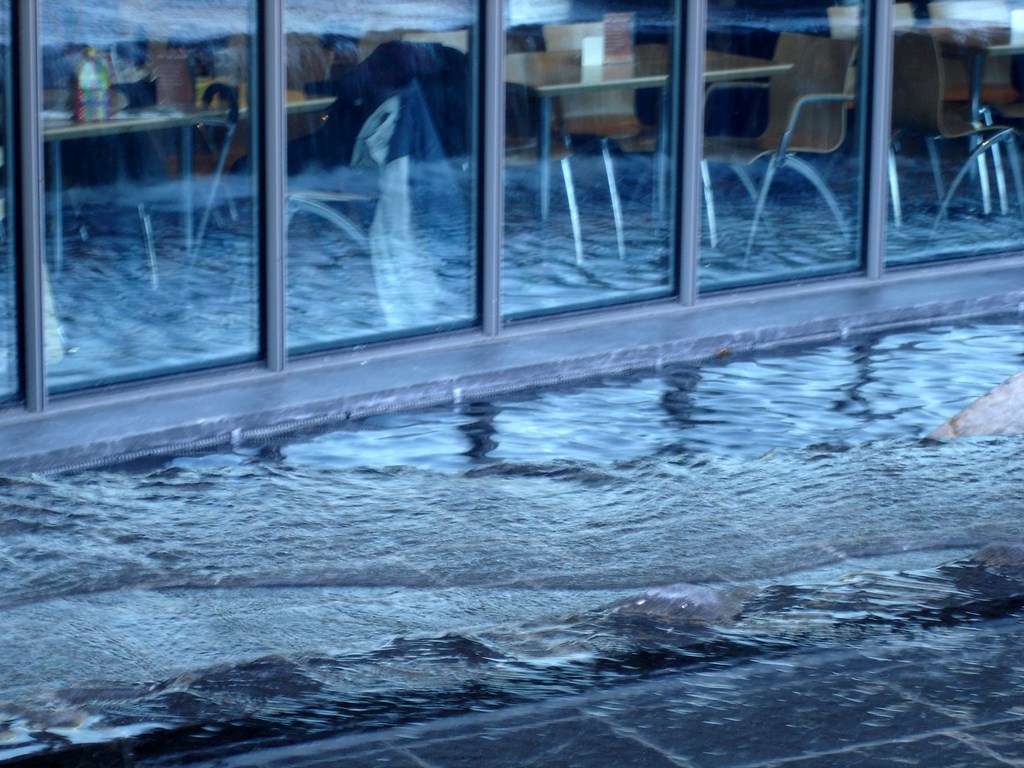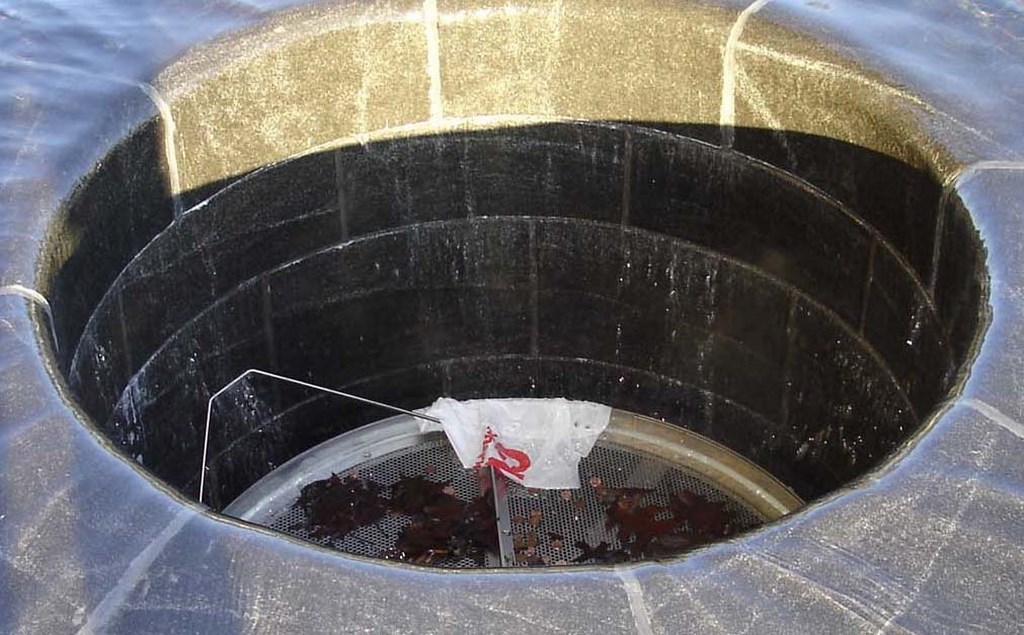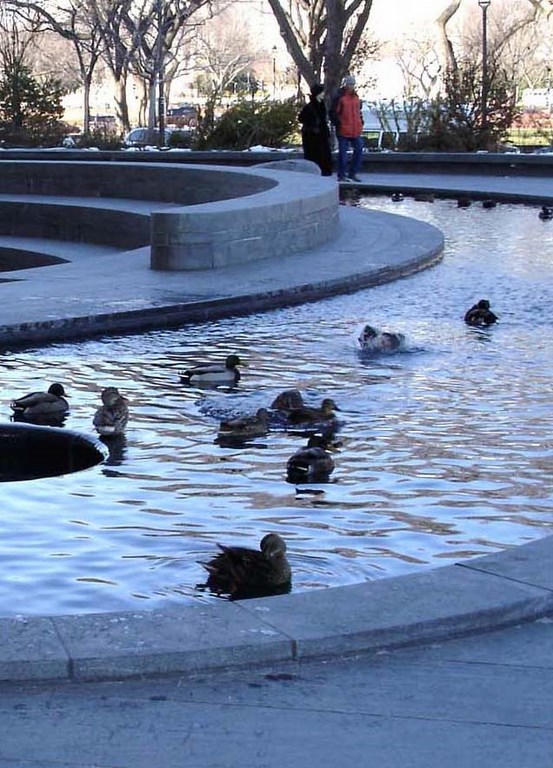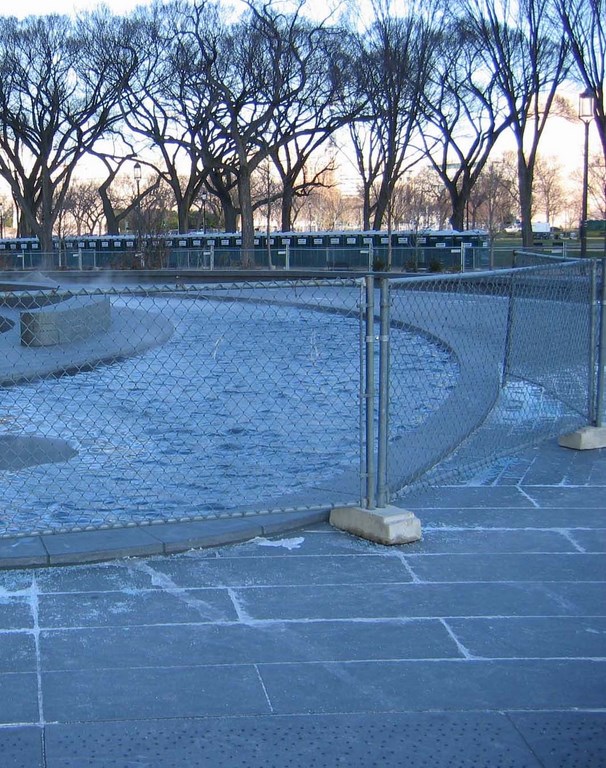Native Vision
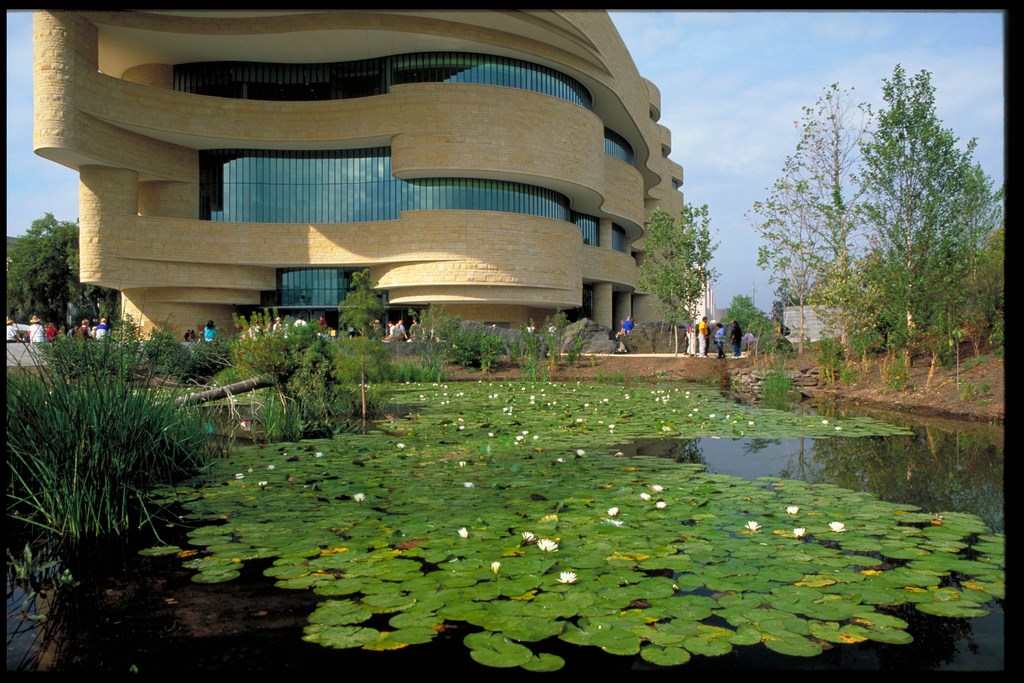
Whether we function as designers or builders or both, we watershapers tend to be flexible folk: We mold ourselves to projects and situations and tasks when we’re called on to apply our skills and experience, and this often leads us to perform in unanticipated ways. This sort of adaptability is a way of life for most of us: It’s a talent we use to produce success.
But even the most adaptable practitioners of the watershaping arts will, every once in a while, encounter a project that shocks the system, alters all formulas and breaks down familiar parameters. In these rare cases, just surviving the process is an accomplishment that brings a sense of relief as well as a sense of amazement that both you and the project made it through to completion.
I was recently fortunate enough to be part of just such a project – a fascinating set of challenges now known as the Smithsonian Institution’s National Museum of the American Indian in Washington, D.C. It’s the last museum that will be placed on the Capitol Mall (at least in the foreseeable future), set between the Air & Space Museum and the National Botanical Garden within an easy walk of the nation’s Capitol.
It’s a spectacular installation, one that combines the highest expressions of naturalistic as well as architectural watershaping.
ON THE MALL
The building itself is unlike any museum I’ve ever seen – even counting Frank Gehry’s extraordinary work in Bilbao, Portugal – and certainly stands out among the other classically styled buildings on the Capitol Mall or anywhere in Washington. It’s a striking exercise in organic modernism, one that evokes Native American influences as well as refined 20th-century design sensibilities.
Indeed, the building’s unique design and the degree to which it contrasts with its surroundings have been the sources of considerable controversy. That’s a detour we won’t pursue here other than to say it complicated the project’s path to completion and led at one time to the dismissal of the entire design team – subsequently rehired.
| The Museum of the American Indian is about as daring a structure as could be conceived of for Washington’s Capitol Mall, with its undulating architecture a stark contrast to the Classical and Modern buildings that surround it. Given that daring context, the wetlands area seems right at home adjacent to the museum’s grand entry plaza – a primeval oasis in the visual shadow of the Capitol Building. (Middle and right photos by David Lloyd) |
The process began in 1993, a few years before I joined EDAW, the giant, San Francisco-based landscape architecture firm. My work on the museum’s watershapes began in 1997, by which time some of the turmoil had subsided. Nonetheless, it was a creative environment filled with challenges, diverse objectives and discussions that swirled around our work all the way through the construction and commissioning processes.
What was always clear was that there were two separate and distinct water elements on the project, one a constructed wetland at the east-facing entry to the building, the other an architectural fountain and watercourse that started at the building’s northwest corner and was meant to flow along its north side.
The original design symbolically connected the watercourse and wetlands across the entry plaza to the building, but because of the scale and projected uses of that space, it was agreed that any sort of visual connection between the two bodies of water would be lost on pedestrians entering the museum or taking in ceremonial activities outside the museum’s entrance. As a result, the visual connection was abandoned, leaving us to treat the two bodies of water as completely separate.
With all this sort of give and take, the design process itself is as much part of the story as is the finished project and came with its share of surprises on its own. By the time I came on the scene, for instance, the design team consisted of not one but two architecture firms; various representatives of civil, mechanical and structural engineering firms; and landscape and advisory architects from EDAW and Jones & Jones Architects & Landscape Architects of Seattle, Wash.
CAREFUL INTEGRATIONS
The last pair of firms in the team listed above set up an interesting relationship in that EDAW and Jones & Jones typically compete with one another but were in this instance asked to cooperate and collaborate.
As the scope of work was arranged, the Alexandria, Va., office of EDAW became responsible for the design of the landscaped areas around the building (including the wetland), while Jones & Jones took charge of the watercourse and stone outcropping that ran alongside and was, for all intents and purposes, part of the building. Indeed, most of the watershape structure adjoined the building’s exterior wall, shared finishes with it and sat on a structural slab that formed the roof of a sub-grade loading dock.
| Despite a difficult project evolution, the nature of the site and the artistic intent of the watershapes made for some intensive pre-planning and engineering. Sleeves for our lines, for example, had to be placed in the museum’s substructure at a time well before final drawings for the watershapes had been prepared, and the emergent desire to put the watercourse’s stonework on display led to design of large, long, gravity-fed inlets to feed the recirculation system with relatively little turbulence. |
The waterfeature studio in EDAW’s Fort Collins, Colo., office (for which I was responsible) was charged with detailing and documenting all systems associated with the wetlands as well as the watercourse’s hydraulic, filtration and electrical systems. In addition, its staff coordinated the architectural details having to do with critical water elements including the weirs, ledges and overflow devices.
This division of labor put our Colorado team in the unique position of working with our own company’s Alexandria office for the wetlands and with Jones & Jones for the watercourse. At each step of the design process, lead architects at Detroit-based Smith Group had to weigh in on the interaction of the fountain and building structure.
In addition to all of the design, engineering and technical talent, the design team also included a group of Native American professionals who had been asked to guide the project to reflect a collaboration of native peoples from across the continent. Their input to the process was always important, but what they were after was often difficult to define – as will be described a bit later on.
The team was large enough that outside observers might have viewed it as unwieldy at best and unworkable at worst, but the fact of the matter is that we coalesced around the tasks at hand and moved forward, each component of the team with a sense of high purpose and ambition to see the project through to success.
WETTER WETLANDS
As mentioned above, one function of my project group had to do with the landscaping of the overall site and the composition of its wetland area.
In this, much of our focus was on assembling a planting scheme for the landscape and the wetland area based on native species as well as plants commonly used by Native Americans. We also began our work with the concept that, like a truly natural system, the wetlands should dry up during the appropriate season to show how working with nature in all its diversity was fact of life for early Americans.
| Flowing alongside the building from west to east, a serpentine watercourse snakes its way across the plaza while creating special areas for pedestrians and museum visitors to relax and appreciate the water’s passage to its terminal well. (Photo at left by David Lloyd) |
This idea soon became the subject of debate within the design team, as the dry season locally would begin midsummer and would include most of July – one of the Capitol Mall’s busiest tourist months.
After some discussion, we resolved the apparent conflict by providing a means of raising and lowering the water level in the wetlands, thereby visually accomplishing our design intent without completely drying up one of the most prominent features of the museum’s entrance.
|
Planting Pains They say when you work in Washington, D.C., you never know what will happen – and that was certainly true for some aspects of this project. With the wetlands area, for example, once it was planted and started looking less like a construction site and more like a natural watershape, a group of ducks took up residence.
But these were no ordinary ducks. Rather, they were federally protected ducks that adopted the wetlands as their new home. This is exactly what we hoped would happen, but it came too soon and the upshot was that ducks we couldn’t mess with in any way all feasted on the shoots we’d painstaking planted to bring the wetlands to life. To say that the landscape contractor was miffed is an understatement and doubtless many a day was spent hoping some federally protected foxes or coyotes would find the watershape in time to balance things out a bit. — D.S. |
As we progressed through the design of the wetlands, we looked for opportunities to minimize our use of municipal water on site. This led us to establish a water-reclamation system in which rain falling on approximately one-third of the museum’s roof area is collected for storage in a large, underground cistern.
This required a good bit of planning, as the quality of the stored water had to match the quality of the water in the aboveground systems the cistern was meant to supply.
The solution was reasonably straightforward: Instead of maintaining the cistern system separately, we integrated it into the wetlands’ circulation system. This means that, in addition to being aerated, the water in the tank is constantly in motion and fits in as part of the watershape’s biological-treatment cycle.
This arrangement also facilitated our desire to change water levels in the wetlands on a seasonal basis, with the capacity of the cistern serving as storage for “excess” wetland water. This enabled us to manipulate water levels without sending any water to waste, with relative levels in both vessels controlled by turning a few valves.
DETAILS OF DESIGN
The nearby fountain and “architectural” watercourse came with its own set of design requirements – a mass of details that made the work difficult to define and articulate.
One substantial challenge, for example, came in reproducing different “voices” of water that one might hear from the cascades and riffles of a natural watercourse. This voicing was one of the strong desires of the Native American participants on the design team and led to a complex process of defining sounds in ways that could be communicated first to the architects and designers and then to the contractors in the form of details that could actually be built.
| A simple adjustment took care of the issue, but during the first winter of operation, we discovered that the water, which was purposefully warmed using the museum’s boiler system so the water would flow freely year ’round, was just a little too warm – the result being the creation of a dense fog over the water that precipitated as ice on the surrounding stonework and decks. |
Helpfully, our staff has lots of experience in designing weir profiles and cascade elements that use different flows to change the mass of water – a process that, in turn, changes the sound water makes as it collides with stone or water. The cascades we worked with ranged from about three meters (as a government project, the job was executed using the metric system) to just three-quarters of a meter in height and fell onto stone boulders or shelves or into shallow pools.
In writing the extensive specifications, we noted that extensive “tooling” of the weir surfaces would be required – a roughening of the stone that would create different patterns on the waterfalls and result in different voices. In addition, we placed numerous stones and boulders in the watercourse’s lower pools to deflect and reflect water and create voids, all by way of manipulating the way the water sounded as it moved.
This stone detailing was at its most intense around the cascades, with multiple weirs in the same pool set at different elevations to create different flows of water from a single source. Moreover, each stone situated in and around the cascades had to be detailed on the drawings to ensure its proper fit on the undulating face of the watershape and along the building’s Kasota limestone façade. (Because of the porous nature of the limestone, we used a similar-colored granite in the wet areas of the fountain pools.)
| The waterfalls and cascades of the Museum of the American Indian have been infused with great significance through the participation of Native Americans who worked with us to ‘tune’ the sounds of the falling water through meticulous, painstaking placement of rock and boulders in the watercourse and detailed tooling of the weir edges. The outcome is both a visual and aural treat. (Photo at right by David Lloyd) |
To highlight the stone, the design called for water depths of no more than six inches in all visually accessible pools. This desire for visibility of the stone finishes made clarity a substantial issue. Given the system’s 7,000 gpm flow, this meant we had to design all of the inlets for extremely slow velocities to avoid surface disturbances and to avoid having mechanical systems disrupt the perception of the setting’s naturalism. To that end, inlets were imbedded into walls and trimmed in granite, while drain fittings were masked with cut-granite stones.
The pools were too shallow for use of conventional suction arrays, so a system of overflows and gravity-fed drain piping was used to move water from the pools and basins to a surge tank placed in the museum’s basement. Much detailing went into setting up these overflows in a way that allowed the water to be maintained at the same level as the sidewalk near the building’s northwest entry – as well as having the water flowing down and toward the building at two cafeteria window wells.
The openings for these overflows had to be visually unobtrusive, but they also had to be large enough to allow debris into the piping and then into the surge tank for collection in large basket strainers on all three of the system pumps.
COLD LESSONS
By design, the watercourse and fountains are to operate year ’round, which led us to set up a heat exchanger on the filter loop to keep the water from freezing in winter. This task was facilitated by the fact we could tie our system into the building’s boiler-based heating system.
Our aim was to maintain the water at about 40 degrees when local air temperatures slid below freezing, but as it turns out, the temperature wasn’t set when the museum opened in September 2004. That first winter, the water temperature proved to be too high, so steam billowed from the fountain, floated away from the basin and condensed over the walkways as snow and ice. Once the temperatures were adjusted appropriately, the steam and snow went away.
|
The ‘Natural’ Choice The wetlands associated with the Museum of the American Indian in Washington, D.C., was intended to be as natural-seeming as possible – a key characteristic of the design mission. Given the site and the naturalistic goal, we decided to line the watershapes with natural Bentonite rather than a conventional fabricated liner. Beyond that, the systems were fairly conventional: biofilters, aeration in the storage cistern and a bacterial-injection system were deployed to assist in the maintenance of water flowing through the heavily planted wetland area. — D.S. |
In addition to this heating issue, another unique lesson had to do with the amount of water that ended up flowing into the surge tank when the watercourse was shut down.
We had calculated that a rise to about the three-meter mark could be expected in the tank, which was 2.7 meters wide, 4 meters long and 5.5 meters tall. When we shut the fountain down, however, an extra meter of water flowed to the tank. After re-checking our calculations and confirming they’d been correct, we were left to find the source of the additional water.
The answer had to do with the granite material we used to create the weirs in the shallow pools – monolithic blocks with split-face finishes. Because of the variability of the splitting process, these stones come with generous plus-or-minus tolerances.
In surveying the system, we found a single joint along more than 95 total meters of weir stones had a greater minus tolerance than the rest of the stones and allowed an extra 40 millimeters (about and inch and a half) more water out of the pool and into the tank than we’d anticipated. Happily, the tank had the capacity to handle the extra water, so we were able to leave well enough alone.
This experience did, however, teach us a lesson about how some of the smallest details in the construction process can have a great effect on the operation of mechanical systems. This is the sort of lesson watershapers always seem to learn in big projects, where unexpected consequences become the building blocks for increased skill and expertise.
Dominic Shaw is founder and president of Waterline Studios, a fountain design firm based in Fort Collins, Colo. Previously, he was a principal and director of waterfeature design for EDAW, Inc., which he joined in 1997 and for which he served the architecture and landscape architecture communities as a consultant on waterfeatures, swimming pools, ponds and constructed wetlands. In the 23 years before he joined EDAW, he worked variously as a product manager for a fountain manufacturer, owned and operated a fountain installation/maintenance company and worked as an independent fountain consultant.
















